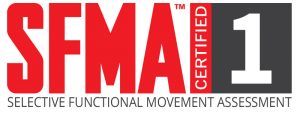- Healing touch for your health and life -
Massage Therapy Modalities
Ligamentous Articular Strain Technique (L.A.S.T.) LAST is a precise, principle based, mechanoreceptor specific manual therapy technique, supported by evidence-informed research, utilized in the treatment of peripheral joint tissue injuries to improve treatment outcomes and improve the quality of life of patients. LAST influences the fascial system and CNS modulation by targeting the ligamentoperiosteal and tenoperiosteal enthuses; areas known to have high concentrations of mechanoreceptors. Mechanoreceptor specific techniques, targeting peripheral joint tissues, affect autonomic nervous system functions resulting in decreased protective myofascial engagement, increased pain pressure sensitivity, normalize kinesthetic and proprioceptive awareness improving treatment outcomes. – L.A.S.T.
Swedish Massage uses a combination of long flowing strokes to massage. The five basic strokes are effleurage (sliding or gliding), petrissage (kneading), tapotement (rhythmic tapping), friction (cross fiber) and vibration/shaking. Used for a variety of conditions, Swedish massage can be utilized with other forms of therapy or used singularly to create an overall relaxation. Generally considered to be soothing, it can also be used with deeper pressure based on the persons needs or likes. Treatment effects include:
- Increased local or full body blood and lymphatic circulation
- Relaxation of the “fight or flight” response
- Increased immune system function
- Decreased pain (to name a few)
Myofascial Release refers to the manual technique for stretching the fascia and releasing bonds between fascia, integument (skin) and muscles. Often fascial adhesions create areas of constant tension and restriction, sometimes affecting areas outside of the local adhesion site (like a pull in a sweater that gets out of hand). Techniques usually involve shear compression, skin rolling or tension applied in different directions dependant on the area and goal of treatment. Treatment effects include:
- Eliminating pain and
- Increasing range of motion
- Decreased restrictions caused by adherence’s in the fascial layers of the body.
Lymphatic Work uses varying pressure, techniques and locations along the lymphatic pathways to assist in clearing stagnation or poor fluid flow in the body to help with various conditions and overall body health. Although generally not intense in pressure the results definitely can be. This style of treatment can also greatly influence the Central Nervous System, specifically the Vagus N, and trigger deep relaxation states.
Craniosacral Therapy focuses on the craniosacral system of the body, a semi-closed hydraulic system that contains the brain and spinal cord. Using the Dura Mater (a water proof membrane that is continuous between the brain and spinal cord) and the boney housing of the nervous system (cranial bones/skull and sacrum) as access points or guides, the system is assessed with gentle pressure. Once the rhythmical movement of these structures has been assessed, using gentle pressure and a series of techniques, any restrictions or breakdowns in the normal movement of the structures is slowly corrected over a series of treatments.
- Good for long standing issues from previous injuries and surgeries
- Early stages of healing
- Pain and issues that have been unresolved with other forms of therapy
- Migraines and headaches
Selective Functional Movement Assessment (SFMA) “SFMA is a movement based diagnostic system, designed to clinically assess 7 fundamental movement patterns in those with known musculoskeletal pain. The assessment provides an efficient method to systematically find the cause of symptoms, not just the source, by logically breaking down dysfunctional patterns and diagnosing their root cause as either a mobility problem or a stability/motor control problem.
This systematic process allows clinicians to clearly match their intervention to the main problem of the patient. This model efficiently integrates the concepts of altered motor control, the neurodevelopmental perspective, and regional interdependence into musculoskeletal practice.” – Functional Movement Systems
***Please note that all treatments, regardless of technique or practitioner, can have side affects. These can range from (but are not limited to) feeling dizzy, nauseated, under the weather, increased soreness initially post treatment, fatigue, and even emotional releases such as crying. Any side effects should be discussed with your RMT for future treatments, however we cannot give medical advice in regards to over the counter medications such as Tylenol, Advil, or muscle relaxants. It is not in our scope of practice to do so. ***
